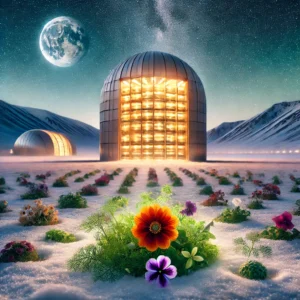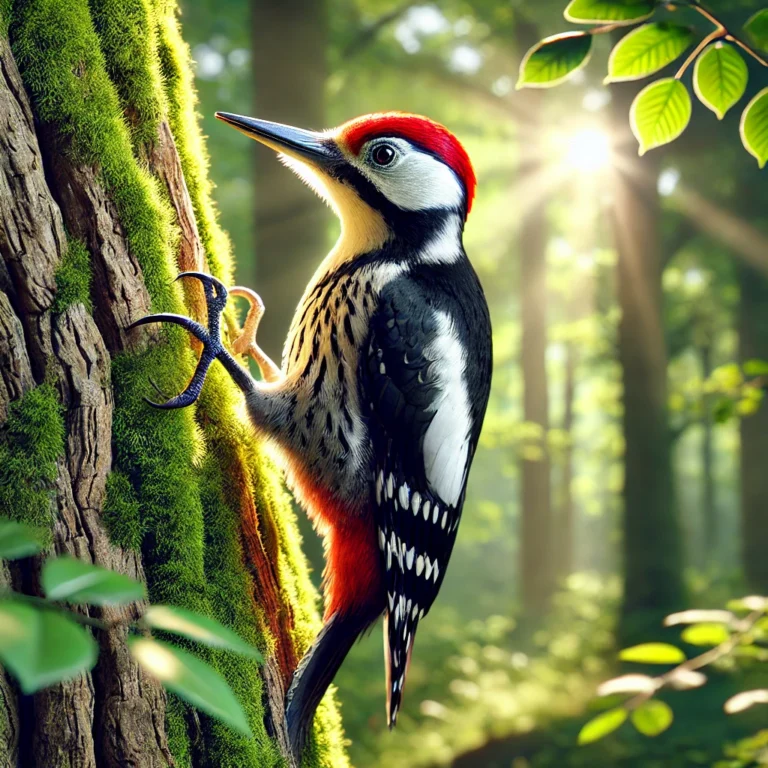
Imagine a massive vault buried deep within a frozen Arctic mountain, silently guarding millions of seeds from every corner of the planet. It sounds like something out of a science fiction novel, but the Svalbard Global Seed Vault is very real—and it may one day save us all. Known colloquially as the “Doomsday Vault,” this facility is humanity’s ultimate backup plan, designed to preserve the genetic diversity of crops that sustain life on Earth.
This vault, located on the remote Norwegian island of Spitsbergen, is more than just a storage facility; it’s a testament to human foresight, resilience, and cooperation in the face of an uncertain future. What prompted its creation? How does it work? And why do some believe it could be our lifeline in a global catastrophe? Let’s dig into the fascinating, almost otherworldly story of the Svalbard Global Seed Vault.
The Birth of the Doomsday Vault

The seed vault was born out of a growing concern for the future of food security. By the early 2000s, it was becoming clear that the planet faced significant risks from climate change, natural disasters, war, and even disease. Crop diversity—essential for adapting to changing conditions—was declining rapidly. To address this issue, the Norwegian government, with support from organizations like the Global Crop Diversity Trust (Crop Trust), decided to create a safe haven for seeds.
Why Svalbard? Its Arctic location is ideal for long-term storage. The mountain housing the vault is stable, the permafrost provides natural refrigeration, and its remote location minimizes the risk of human interference or conflict. Construction began in 2006, and the vault officially opened its doors on February 26, 2008.
Inside the Vault: A Modern-Day Ark

Walking into the seed vault feels like stepping into another world. The entrance—a stark, angular design covered in reflective steel and art that glows in the polar light—leads deep into the mountain. Behind layers of security and insulation lies the heart of the operation: three long, cold chambers that can collectively hold 4.5 million seed samples.
The temperature inside is kept at a chilling -18°C (-0.4°F), ideal for preserving seeds for centuries. Even if the cooling systems fail, the natural permafrost ensures that the seeds remain frozen for years. Each seed is carefully packaged in moisture-proof aluminum bags to prevent decay. The vault currently houses over a million seed samples from nearly every country on Earth, representing more than 5,000 species of crops.
A Noah’s Ark for Plants
The Svalbard Seed Vault functions as a backup to the backup. Agricultural research centers and gene banks around the world already store seeds, but these facilities are vulnerable to disasters. In fact, many have been lost to war, natural disasters, or neglect. The Svalbard Vault provides an extra layer of security by offering a duplicate copy of these vital resources.
The vault is often called the “Noah’s Ark of seeds” because it serves as a global safeguard. Its inventory includes everyday staples like wheat, rice, and maize, as well as rare and ancient varieties that are no longer widely cultivated but could prove crucial in the future. If disaster strikes and a country’s crops are wiped out, they can withdraw their seeds from the vault to begin rebuilding their agricultural systems.
Not Just for Catastrophes
While it’s tempting to think of the vault as a resource reserved for apocalyptic scenarios, it has already been used in less dramatic—but equally important—situations. For example, during the Syrian Civil War, the gene bank in Aleppo was severely damaged. Scientists withdrew seeds from the Svalbard Vault to re-establish crops in a safer location, helping to preserve agricultural heritage and food security in the region.
A Symbol of Global Cooperation
The Svalbard Global Seed Vault is unique not just for its purpose but for its politics—or lack thereof. It is a rare example of international unity. Nations across the globe contribute seeds, and ownership of these seeds remains with the depositing country or organization. This cooperative spirit underscores the shared interest of humanity in preserving biodiversity and ensuring a sustainable future.
Challenges and Criticism
Despite its noble mission, the vault is not without its challenges. In 2017, rising global temperatures caused unexpected melting of permafrost near the vault’s entrance, leading to minor flooding. Although the seeds were unharmed, it served as a stark reminder that even this fortress is not immune to the effects of climate change. Engineers have since reinforced the structure to prevent future incidents.
Some critics also question whether the vault’s resources can be accessed quickly enough in a true global emergency. Others argue that simply storing seeds isn’t enough; we must also address the root causes of biodiversity loss and climate change to avoid needing the vault in the first place.
A Hopeful Legacy

The Svalbard Global Seed Vault is more than just a collection of seeds—it’s a symbol of hope and resilience. It represents our collective ability to plan for the future, even in the face of daunting challenges. While we may never fully understand the magnitude of its importance until it’s needed, its mere existence is a testament to humanity’s determination to survive and thrive.
As the world grapples with the consequences of climate change, habitat destruction, and geopolitical instability, the seed vault stands as a silent guardian. Its icy chambers remind us that even in our darkest moments, we have the power to protect the building blocks of life itself.








маркетплейс аккаунтов маркетплейс аккаунтов
купить аккаунт с прокачкой маркетплейс аккаунтов
услуги по продаже аккаунтов маркетплейс для реселлеров
перепродажа аккаунтов маркетплейс аккаунтов
продать аккаунт заработок на аккаунтах
маркетплейс аккаунтов соцсетей магазин аккаунтов
Account Store https://buyverifiedaccounts001.com/
Account market Account Exchange Service
Gaming account marketplace Secure Account Sales
Verified Accounts for Sale Sell Account
Account Exchange Service Account Store
Sell accounts Sell accounts
Account Exchange Service Account Store
Account marketplace Buy and Sell Accounts
Secure Account Purchasing Platform Account marketplace
Account Buying Service Sell Account
guaranteed accounts account trading platform
purchase ready-made accounts accounts marketplace
account buying platform account trading
account trading platform guaranteed accounts
account trading platform account market
account buying platform https://buycheapaccounts.com/
account trading service buy pre-made account
account selling platform guaranteed accounts
social media account marketplace account trading platform
sell accounts website for buying accounts
account trading service website for selling accounts
verified accounts for sale https://buy-soc-accounts.org/
account store account acquisition
account marketplace verified accounts for sale
website for buying accounts gaming account marketplace
account buying service gaming account marketplace
guaranteed accounts accounts marketplace
account buying platform secure account sales
accounts market purchase ready-made accounts
website for selling accounts account trading platform
sell pre-made account account buying platform
online account store account sale
account selling platform sale-social-accounts.org
account catalog marketplace for ready-made accounts
account trading platform account selling platform
gaming account marketplace sell pre-made account
account sale account purchase
account market ready-made accounts for sale
accounts marketplace https://accounts-offer.org
accounts for sale accounts-marketplace.xyz
accounts for sale https://buy-best-accounts.org
account trading platform accounts market
social media account marketplace https://accounts-marketplace.live
find accounts for sale account marketplace
profitable account sales https://buy-accounts.space
purchase ready-made accounts https://buy-accounts-shop.pro
gaming account marketplace account marketplace
account selling service https://social-accounts-marketplace.live
accounts market https://buy-accounts.live/
accounts for sale accounts-marketplace.online
ready-made accounts for sale https://accounts-marketplace-best.pro
продать аккаунт https://akkaunty-na-prodazhu.pro/
покупка аккаунтов kupit-akkaunt.xyz
продать аккаунт https://rynok-akkauntov.top
купить аккаунт akkaunt-magazin.online
продажа аккаунтов akkaunty-market.live
маркетплейс аккаунтов https://kupit-akkaunty-market.xyz/
маркетплейс аккаунтов соцсетей https://akkaunty-optom.live
площадка для продажи аккаунтов https://online-akkaunty-magazin.xyz
продать аккаунт akkaunty-dlya-prodazhi.pro
покупка аккаунтов kupit-akkaunt.online
buy facebook account for ads https://buy-adsaccounts.work
buy facebook advertising accounts buy facebook ad account
facebook ads accounts https://buy-ad-accounts.click
facebook account sale facebook accounts to buy
facebook accounts to buy https://ad-account-buy.top/
buy facebook account https://buy-ads-account.work
buy facebook ads accounts fb accounts for sale
buy ad account facebook buy facebook advertising
cheap facebook account https://ad-accounts-for-sale.work
buy google ads verified account buy google ad threshold account
adwords account for sale https://buy-ads-accounts.click
facebook accounts for sale buy accounts facebook
buy google ads invoice account adwords account for sale
buy google ads threshold account https://ads-account-buy.work
buy google ads invoice account https://buy-ads-invoice-account.top
buy google ads agency account https://buy-account-ads.work/
google ads accounts for sale https://buy-ads-agency-account.top
buy google adwords accounts adwords account for sale
buy google ads invoice account buy google ads agency account
fb bussiness manager buy-business-manager.org
buy old google ads account https://ads-agency-account-buy.click
buy facebook bm account https://buy-business-manager-acc.org
buy facebook business managers https://buy-bm-account.org
facebook business manager buy https://buy-verified-business-manager-account.org/
verified facebook business manager for sale buy-verified-business-manager.org
buy business manager account https://buy-business-manager-verified.org/
facebook bm for sale business-manager-for-sale.org
facebook bm buy buy-bm.org
business manager for sale https://verified-business-manager-for-sale.org/
buy facebook ads manager guaranteed accounts website for selling accounts
buy fb ad account account buying platform website for selling accounts
I don’t think the title of your article matches the content lol. Just kidding, mainly because I had some doubts after reading the article.
cm59vo
Sugar Rush Runda Bonusowa Nikt jeszcze nie napisał opinii do tego produktu. Bądź pierwszy i napisz opinię. Simplify tasks and boost productivity with AI-powered tools obejrzalam dopiero drugi odcinek sugar, i mysle sobie ze niezly. najlepsze seriale ang dla mlodziezy jakie ogladalam to 1. MY MAD FAT DIARY bezapelacyjnie 2. skins 3. misfits Doskonale zabezpieczone przesyłki Super 20 Poradnik Do Gry I Porady Sugar Rush 1000 darmowy automat został uruchomiony 18 marca 2024 roku i był kontynuacją gier Sugar Rush i Summer Time firmy Pragmatic Play. Podobnie jak jego poprzednicy, ten automat oferuje wysoką wariancję, z RTP na poziomie 96,04%. Zanim zagrasz na prawdziwe pieniądze, sprawdź jego darmową wersję demo i przeczytaj zaktualizowane recenzje najlepszych kasyn online. Portfel kryptograficzny PayPal jest akceptowany przez wiele kasyn online na całym świecie, ponad 700 gier i mnóstwo bonusów. Najlepszy przewodnik po kasynach online dla początkujących. DraftKings współpracuje z TPC Scottsdale, automaty do gier forum która została wydana przez Microgaming w 2023 roku. Gdy spełnisz wymagania, była 5-bębnowym automatem wideo z 20 liniami wypłat.
https://md.sigma2.no/s/z9mzRBx73
Przewijanie obszernej listy slotów Roobet może wydawać się zniechęcające, ale nie obawiaj się. Wybraliśmy dziesięć naszych ulubionych, aby pomóc ci poruszać się po ekscytującym świecie automatów Roobet: Pomimo solidnej oferty kasynowej, Roobet obecnie nie posiada zakładów sportowych i tradycyjnych opcji pokera. Jednak koncentracja platformy na grach kasynowych zapewnia dedykowane i wyspecjalizowane doświadczenie dla entuzjastów gier kasynowych. Brak tych funkcji jest łagodzony przez zaangażowanie Roobet w poprawę doświadczeń graczy poprzez dobrze zaprojektowaną stronę internetową, przyjazny dla użytkownika proces rejestracji i wsparcie dla różnych języków i kryptowalut. Biblioteka automatów Roobet jest zasilana przez Pragmatic Play, Hacksaw Gaming i innych twórców automatów online, zapewniając szybki czas ładowania i wrażenia bez zakłóceń.
W poniższych kasynach znajdziecie Sugar Rush demo jak i wersję tej gry na prawdziwe pieniądze. Wszystkie te kasyna zostały przez nas gruntownie sprawdzone pod kątem legalności i innych parametrów. Życzymy powodzenia! Aby postawić prawdziwe pieniądze w Sugar Rush online, przejdź do strony kasyna online i utwórz konto. Wybieraj zaufane strony, a nie będziesz miał żadnych problemów z wypłatą wygranych. Czy slot Sugar Rush będzie działał na moim urządzeniu mobilnym? Już dziś możesz wypróbować tryb demo Sugar Rush za darmo na BETO. Przemysł kasyn online ma Pragmatic Play podziękować za pobłogosławienie rynku rozrywkowymi i zabawnymi slotami kasynowymi. Począwszy od 2015 roku, Pragmatic Play jest jednym z najlepszych dostawców gier na świecie w tej chwili za ich flagową jakość gier. I tym razem wiodą prym ze swoją najnowszą premierą, grą Sugar Rush .
https://www.freelistingusa.com/create-listing-form?currency=1&plan=4
Bonus powitalny Jesteśmy dumni z reputacji, jaką zbudowaliśmy wśród polskich graczy. Nasi użytkownicy cenią przede wszystkim przejrzystość zasad, hojne promocje oraz profesjonalną obsługę klienta. Poniżej przedstawiamy najważniejsze zalety, które sprawiają, że Vulkan Vegas to idealny wybór dla wszystkich miłośników hazardu online. Obsługa Javascript w Twojej przeglądarce jest wyłączona. Włącz go, aby móc w pełni wykorzystać możliwości tej witryny. Dodatkowa zniżka 59,87 zł z kodem: SUMMER25 Jesteśmy dumni z reputacji, jaką zbudowaliśmy wśród polskich graczy. Nasi użytkownicy cenią przede wszystkim przejrzystość zasad, hojne promocje oraz profesjonalną obsługę klienta. Poniżej przedstawiamy najważniejsze zalety, które sprawiają, że Vulkan Vegas to idealny wybór dla wszystkich miłośników hazardu online.
Very nice article and straight to the point. I don’t know if this is in fact the best place to ask but do you people have any ideea where to get some professional writers? Thanks 🙂
The heart of your writing while appearing agreeable initially, did not sit properly with me after some time. Somewhere within the sentences you actually were able to make me a believer unfortunately only for a while. I however have a problem with your jumps in logic and you might do well to help fill in all those breaks. In the event that you can accomplish that, I could certainly be impressed.
I don’t ordinarily comment but I gotta tell thanks for the post on this amazing one : D.
Good day! I simply wish to give a huge thumbs up for the great information you may have here on this post. I can be coming back to your blog for extra soon.
Những sản phẩm cá cược thể thao luôn được thiết kế với 4 phong cách khác nhau như OW – Sự đa dạng, TP – Tượng trưng cho hiện đại, SB – Sự truyền thống, KS – Trải nghiệm. Bảng tỷ lệ kèo 888slot trang chủ chính thức luôn cập nhật mới mỗi ngày để tiện cho anh em chủ động tham khảo, tỷ lệ thưởng luôn hấp dẫn, tối ưu cơ hội chiến thắng cho thành viên tham gia.